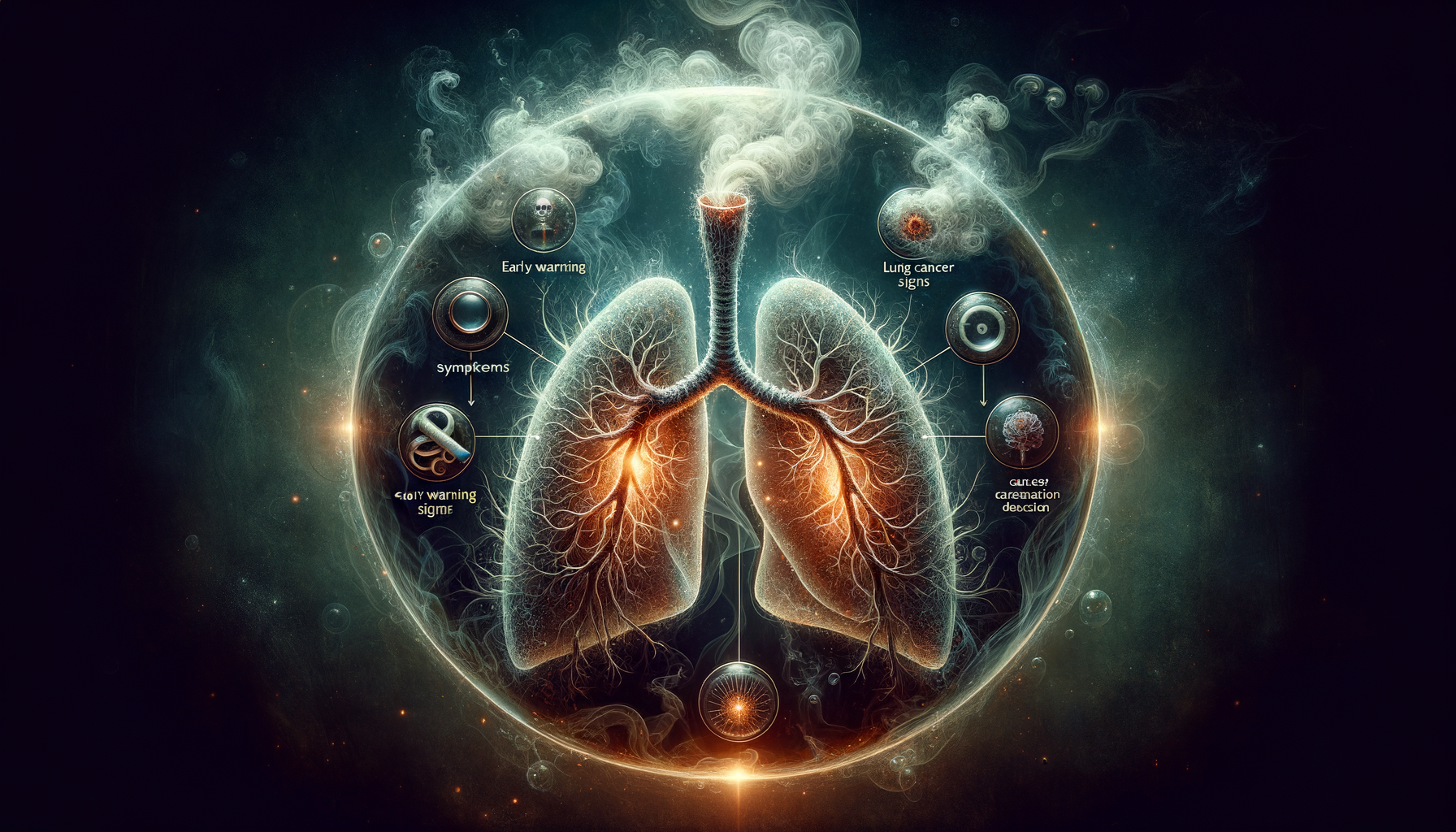Understanding Lung Cancer Symptoms
Lung cancer is a critical health issue that affects millions of individuals worldwide. Recognizing the symptoms early can lead to better outcomes and improved survival rates. The symptoms of lung cancer can often be subtle and easily mistaken for other less severe conditions. Common symptoms include a persistent cough that doesn’t go away, chest pain that worsens with deep breathing, coughing, or laughing, and unexplained weight loss.
Other symptoms may include hoarseness, loss of appetite, and shortness of breath. It is crucial to pay attention to these signs, especially if they persist or worsen over time. A chronic cough that changes in intensity or character can be a significant indicator of lung cancer. Furthermore, recurring respiratory infections such as bronchitis or pneumonia might also be warning signs.
It’s important to note that these symptoms can vary depending on the type and stage of cancer. For instance, small cell lung cancer might present differently compared to non-small cell lung cancer. Hence, being vigilant about any unusual health changes and seeking medical advice promptly is essential.
Early Warning Signs to Watch For
Detecting lung cancer in its early stages can significantly impact treatment success and survival rates. Early warning signs often overlap with general symptoms but may include more specific indicators. One of the earliest signs could be a persistent cough that gradually worsens over time. This cough may produce blood or rust-colored sputum, which is a clear indication that medical evaluation is necessary.
Another early warning sign is chest discomfort or pain that doesn’t subside. This pain might be sharp or dull and can extend to the shoulders or back. Additionally, experiencing shortness of breath during routine activities can be an early indicator, especially if it is a new development for the individual.
Fatigue and weakness, while common in many conditions, can also be early signs of lung cancer. If these symptoms are accompanied by other signs such as a persistent cough or unexplained weight loss, they warrant further investigation. Early detection through awareness of these signs can lead to timely medical intervention and potentially better outcomes.
Methods of Lung Cancer Detection
Detecting lung cancer early requires a combination of awareness and medical technology. Various methods are used to diagnose lung cancer, each with its advantages. Imaging tests such as X-rays and CT scans are often the first step in detecting abnormalities in the lungs. These tests can reveal tumors or suspicious areas that may require further investigation.
In addition to imaging, a biopsy is a crucial method for confirming a lung cancer diagnosis. During a biopsy, a small sample of lung tissue is removed and examined under a microscope to check for cancer cells. This procedure can be done in several ways, including bronchoscopy or needle biopsy, depending on the tumor’s location.
Moreover, sputum cytology, which involves examining the mucus coughed up from the lungs, can sometimes reveal cancer cells. Advances in technology have also introduced molecular testing, which helps in identifying specific genetic mutations in cancer cells, guiding targeted therapy options.
Early detection through these methods can lead to more effective treatment plans and improved prognosis for individuals with lung cancer. Regular check-ups and screenings, especially for high-risk individuals, are essential components of early detection strategies.
Risk Factors and Prevention
Understanding the risk factors associated with lung cancer can aid in prevention and early detection. Smoking is the most significant risk factor, contributing to the majority of lung cancer cases. However, non-smokers can also develop lung cancer due to factors such as exposure to secondhand smoke, radon gas, asbestos, and other carcinogens.
Genetic predispositions and family history can also play a role in an individual’s risk of developing lung cancer. While some risk factors cannot be controlled, lifestyle changes can significantly reduce the risk. Quitting smoking, avoiding exposure to known carcinogens, and maintaining a healthy lifestyle with regular exercise and a balanced diet can all contribute to lowering the risk.
Preventive measures also include regular health screenings and being vigilant about changes in health. For those with a significant history of smoking or exposure to risk factors, discussing screening options with a healthcare provider is advisable. By understanding and mitigating these risks, individuals can take proactive steps toward lung cancer prevention.
Conclusion: The Importance of Awareness
Lung cancer remains a significant health challenge, but awareness and early detection can make a crucial difference. By understanding the symptoms, recognizing early warning signs, and utilizing effective detection methods, individuals can improve their chances of successful treatment. Awareness of risk factors and taking preventive measures further enhances the ability to combat this disease.
Ultimately, staying informed and proactive about lung health is vital. Encouraging open dialogues with healthcare professionals and participating in regular screenings are key strategies in the fight against lung cancer. Through collective efforts in education and prevention, the impact of lung cancer can be reduced, leading to healthier outcomes for many.




Leave a Reply